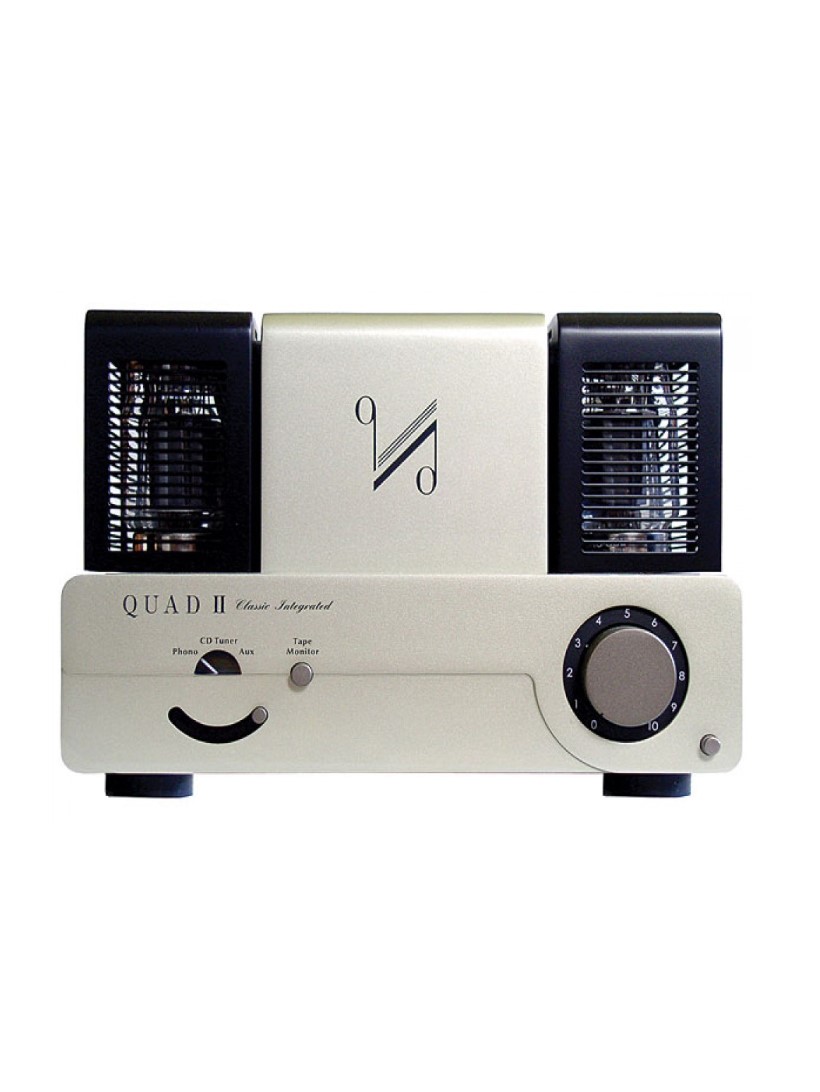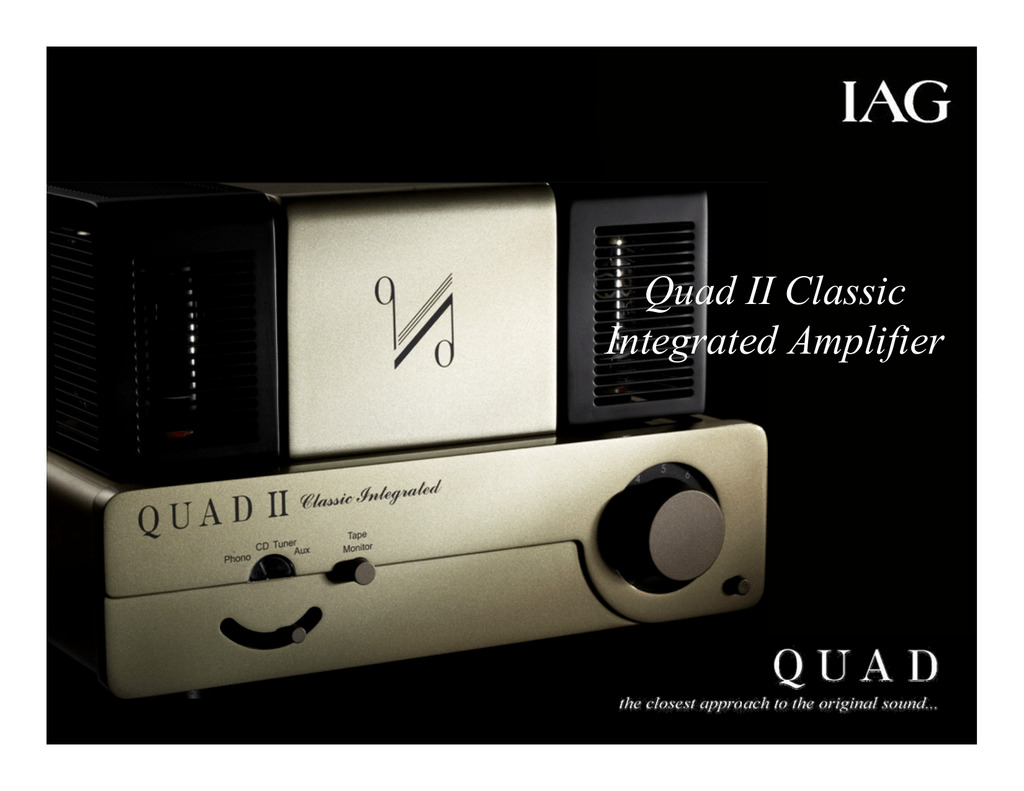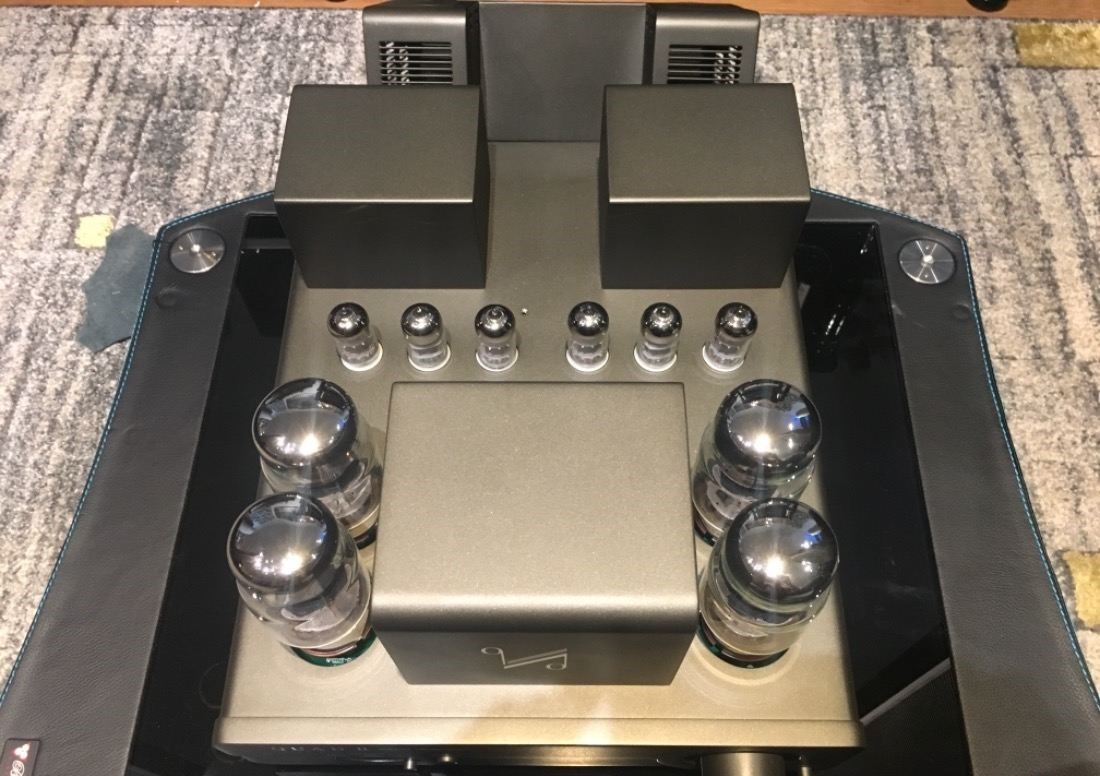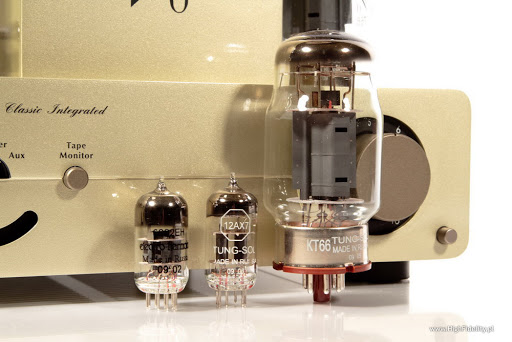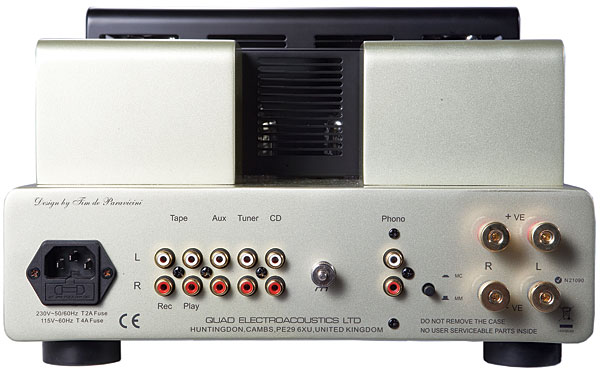Manufacturer’s specs
Description: Two-channel tubed integrated amplifier. Tube complement: four KT66, four 12AX7, two 6922EH. Line inputs: 3 plus tape loop. Phono inputs: 1 (switchable, MM or MC). Input sensitivity: 275mV (line), 2mV (MM phono), 200µV (MC phono). Rated output power: 25Wpc into 8 ohms (14dBW). Frequency response: 20Hz–20kHz, –1dB. Total harmonic distortion: <0.6% at 15Wpc, 700Hz.
Dimensions: 12.1″ (310mm) W by 7.8″ (200mm) H by 14.8″ (380mm) D. Weight: 42 lbs (19.1kg).
Finishes: Champagne Gold, Lancaster Grey.
Listening
The first things that struck me about the Quad’s sound were its up-front presentation—this wasn’t at all a laid-back performance—and its readily apparent sense of drive with up-tempo music. The musical timing of all recordings was well preserved, although the Quad II Classic sounded especially fleet of foot with quick, snappy acoustic music such as David Grisman’s “E.M.D.,” from the first, eponymous album by the David Grisman Quintet (LP, Kaleidoscope F-5).
With line and phono sources alike, the Quad’s midrange was lush and warm, with decent contrast between timbrally light and dark sounds in the mix, albeit less natural texture than I expected. In my system, driving the Audio Note cone-and-dome speakers, the Quad’s most notable shortcoming was a lack of extension at the frequency extremes—especially the bottom end. Through the Quad II Classic, the dB’s’ “Happenstance,” from their Repercussion (LP, Albion ALLP 400032J), sounded overly midrangey: the inverse of the rightly maligned hi-fi “scoop.” There was fine punch and presence in the electric guitars, and the drumming sounded acceptably forceful, but the electric bass lacked that last bit of extension and power, and the Quad’s slight lack of top-end sparkle conspired to make the voices sound a bit dull and lacking in presence.
Chamber music and very well-recorded symphonic fare were better served by the Quad’s timbral balance. Of the former, the II Classic did a splendid job with the richly recorded sonorities of the Affetti Musicali’s recording of Biber’s Mysteriensonaten (CD, Winter & Winter 910 029-2). It missed a lot of the natural texture in that recording, but the Quad did allow the music to unfold with near-hypnotic intensity. As to the latter, recordist René Laflamme’s masterful recording of Hindemith’s Escale Romantique, performed by Daniel Myssyk and the Ensemble Instrumental (ripped from the Fidelio sampler Escales, no catalog number, www.fidelioaudio.com), was clear and spacious through the Quad amp, yet engagingly rich and warm.
Back to popular fare: Stevie Wonder’s “Pastime Paradise,” from Songs in the Key of Life (LP, Tamla T13-34062), sounded acceptably good through the Quad, but a little flat compared with my reference Shindo electronics; the latter did a distinctly better job of unraveling the sounds of the combined handclaps, strings, and percussion instruments. I also found myself wishing that those and other sounds would stand out more from the mix, and attain a greater sense of spatial presence.
Thus far I was charmed but unexcited by the Quad II Classic Integrated; replacing the conventional Audio Note loudspeakers with my original Quad ESLs turned up the passion considerably. Interestingly, the amp’s lack of treble air—and commensurately midrangey sound—persisted, yet I found those characteristics to be far less objectionable when coupled with the naturally spacious presentation of the electrostatic panels. More important, I think, was the manner in which the amp and speakers jelled throughout the bass and lower midrange. “Überlin,” from R.E.M.’s Collapse Into Now (CD, Warner Bros. 525611-2), worked very well through this combo, with fine instrumental sound and excellent momentum. And MoFi’s recent reissue of the Band’s Rock of Ages (SACD/CD, Capitol/Mobile Fidelity Sound Lab UDSACD 2046) sounded snappy, impactful, tonally well-balanced, and surprisingly spacious. The Quad-Quad combo let me enjoy that recording more than ever.
I was reluctant to turn back—and wound up spending more time with this pairing than I did with the Quad II Classic Integrated driving my Audio Notes. Through the electrostats, the Quad amp sounded brilliant with my favorite collection of Elgar’s shorter works, by Paul Goodwin and the English Chamber Orchestra (CD, Harmonia Mundi HMU 907258). String tone was marvelous throughout, and the percussion that opens the third section of the Nursery Suite was appropriately startling, with more impact than Quad skeptics would expect. Even an admittedly grotty bootleg recording of Procol Harum playing “Repent Walpurgis” at the Fillmore East in 1969 (CD, Third Eye, no catalog number) sounded magnificent through this pairing—again, with surprisingly good impact on B.J. Wilson’s masterful drumming and guitarist Robin Trower’s feedback-drenched dive-bomb ending. The finest accolade I can offer any domestic playback machine applied here: It was satisfying.
Conclusions
Inasmuch as Quad Electroacoustics set out to recast their nearly-60-year old Quad II as a full-function integrated amp, they have thoroughly succeeded: The Quad II Classic Integrated offers the same basic sound—perhaps tidied up a bit—in tandem with a modern solid-state phono section, itself remarkable for blending well with its tubey surroundings. Also like the Quad II of old, the new amp lacks the openness and texture of some modern designs—but makes up for it by singing with Quad’s own ESL, itself not known for playing well with modern children.
If Quad ESLs—perhaps even other electrostats—are your everyday speakers, and if your aesthetic sensibilities are tuned to its very vintage look and feel, the Quad II Classic Integrated will no doubt delight you.

